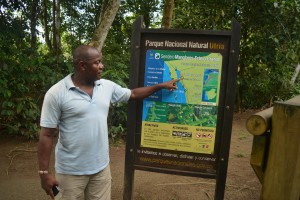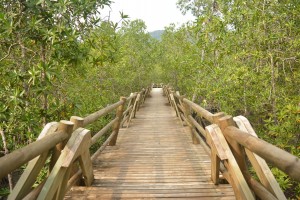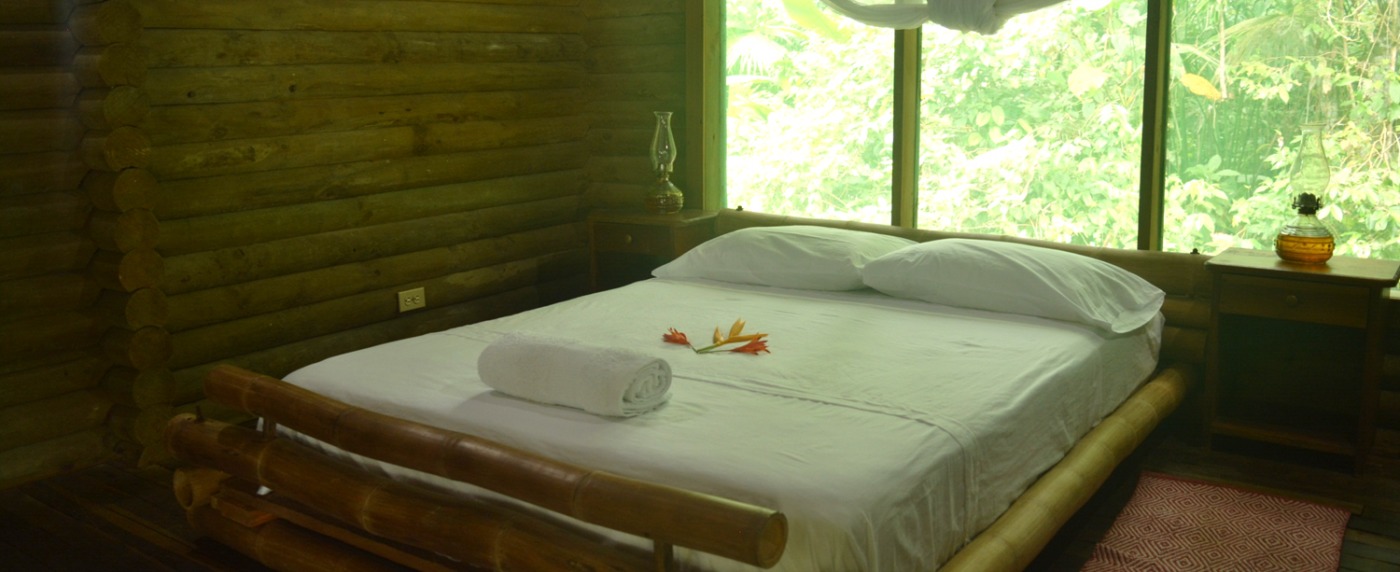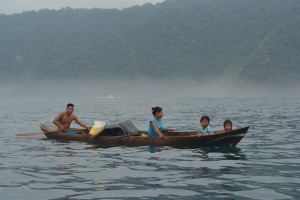After Nuqui, Guachalito and Jurubida, I finally come to Utria to know “Mano Cambiada”, Josefina’s sustainable tourism project who I quickly met in Bogota during the ANATA tourism show. I reach ma new destination once again aboard a small craft thirty-minute from Jurubida where I say goodbye to Carmen and Nohelia.
Mano Cambiada Project
 Josefina just won the women-of-the-year CAFAM prize for her pioneer role and for being a rallying person as regards the sustainable and community tourism project development in Choco area. Unfortunately, my date of stay in the region and hers don’t match because she is currently on the Atlantic coast. But her son, Lucho, is here to welcome me.
Josefina just won the women-of-the-year CAFAM prize for her pioneer role and for being a rallying person as regards the sustainable and community tourism project development in Choco area. Unfortunately, my date of stay in the region and hers don’t match because she is currently on the Atlantic coast. But her son, Lucho, is here to welcome me.
Mano Cambiada is located inside the Natural National Park of Utria, the perfect place to discover the mangrove swamp next door via the one-mile wood hedge built to cross the surroundings or even to kayak. The area was declared National Park in 1987 (my year of birth!). There has always been the accommodation option but Mano Cambiada took back the site management since 2008 in order to improve the infrastructure and promote the destination.
 The rooms are shared in three different huts, and when is coming the night, we can hear the sound of the wages, the breeze through the rainforest trees and the living-animal noises –a perfect mix for a complete reconnection with nature. Meet up on Hopineo the Mano Cambiada presentation and two sustainable practices on video (hopsolutions): Promote Natural National Parks and Plastic Garbages Transportation by Travelers.
The rooms are shared in three different huts, and when is coming the night, we can hear the sound of the wages, the breeze through the rainforest trees and the living-animal noises –a perfect mix for a complete reconnection with nature. Meet up on Hopineo the Mano Cambiada presentation and two sustainable practices on video (hopsolutions): Promote Natural National Parks and Plastic Garbages Transportation by Travelers.
Developing a Community Tourism
Community tourism is a tourism organized by and for the community. The goal is to gather together the different actors of the destination (transportation, accommodation, catering and activities) about a double shared goal:
 Offer a real and unique experience for travelers willing to discover and learn from a different culture.
Offer a real and unique experience for travelers willing to discover and learn from a different culture.- In order to develop the area as touristic destination and thus work together on the economic development of the zone inside the community.
However, put theory into practice is not easy. It is difficult to share the income between everybody, above all when some people work harder than the other. There might be internal conflicts. And the destination development process takes time. The benefits of today effort are not reaping tomorrow. A community tourism project grows through the years. Click on the links attached to download a very interesting marketing study published by the CBI (Dutch Ministry of Foreign Affairs): in english / in spanish.
It is the first experience of my Hospitality Tour in Latin America in my community tourism project. I have already confirmed such other projects in Ecuador. I can’t wait to learn more on it. Is that kind of tourism not the most sustainable and responsible one?
Translated by Clémence Duvent


 Offer a real and unique experience for travelers willing to discover and learn from a different culture.
Offer a real and unique experience for travelers willing to discover and learn from a different culture.